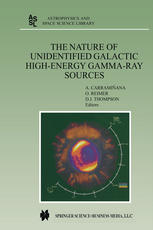

Most ebook files are in PDF format, so you can easily read them using various software such as Foxit Reader or directly on the Google Chrome browser.
Some ebook files are released by publishers in other formats such as .awz, .mobi, .epub, .fb2, etc. You may need to install specific software to read these formats on mobile/PC, such as Calibre.
Please read the tutorial at this link: https://ebookbell.com/faq
We offer FREE conversion to the popular formats you request; however, this may take some time. Therefore, right after payment, please email us, and we will try to provide the service as quickly as possible.
For some exceptional file formats or broken links (if any), please refrain from opening any disputes. Instead, email us first, and we will try to assist within a maximum of 6 hours.
EbookBell Team

0.0
0 reviewsThe Energetic Gamma-Ray Experiment Telescope (EGRET) instru ment on the Compton Gamma-Ray Observatory left as a legacy its Third Catalog of High Energy Gamma-Ray Sources, whose detections include a large number of blazars, some pulsars, the Large Magellanic Cloud and a solar flare. Most of the newly discovered objects - a majority of the catalog -are unidentified sources, with a clearly predominant Galactic population. Are all these radio-quiet pulsars, like Geminga, or is there a novel type of celestial object, awaiting identification? In spite of the limited angular resolution provided by EGRET and COMPTEL, there is still much to learn about unidentified ,-ray sources: correlation studies, multiwavelength observations and theoretical work can provide valuable clues, specially if these efforts are carried out in a coordinated manner. The aim of this workshop, held from October 9 to 11, 2000, at the Instituto N acional de Astrofisica, Optica y Electronica, at Tonantzintla, Mexico, was to gather experts on the subject, including observational as tronomers specialized in other regions of the electromagnetic spectrum, in an effort to address the question of the Nature of Galactic high-energy gamma-ray sources, both from the theoretical and observational perspec tive, and elaborate schemes for future identification studies which can make use of existing and forthcoming facilities.